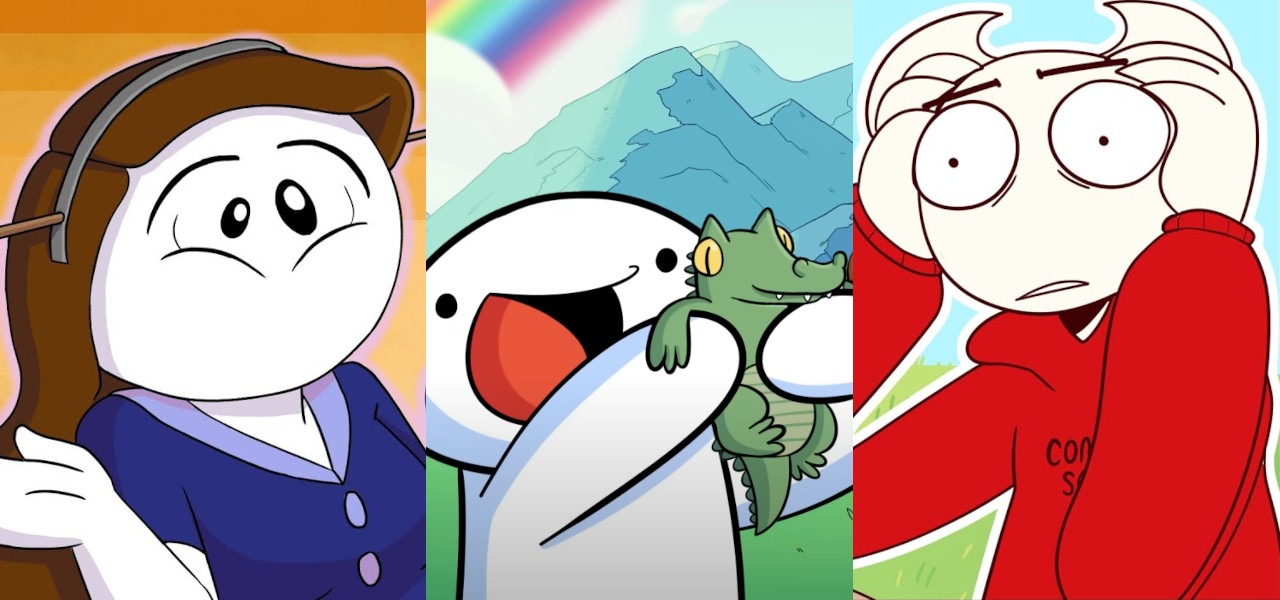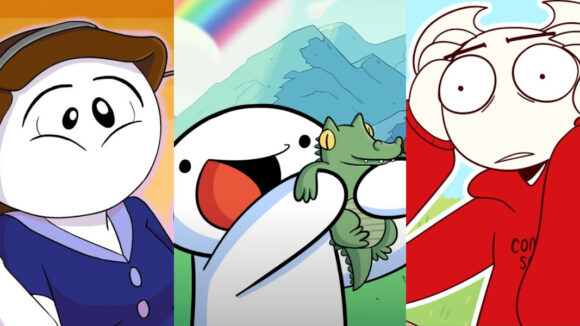

Discussion: Top Youtube Animation Creators Get Candid About Life As An Indie Animator
A new episode of the Youtube series Assumptions was uploaded this week, which features popular indie artists James Rallison (TheOdd1sOut), Rebecca Parham (Let Me Explain Studios), and Adam Ortiz Jr. (SomeThingElseYT) answering questions about the lives and jobs of Youtube-native animators.
The premise of the show is that guests address assumptions made by viewers. So, in this episode, questions and statements about Youtube animator finances, motivations, and fanbases were posed to the panel of professionals.
One of the first assumptions posed to Parham, Rallison, and Ortiz was that “Youtube animators are insanely rich.”
Understandably, personal finances weren’t discussed, but Rallison did talk generally about how costly creating an animated Youtube video can be, especially when working with a team of artists:
I want them to get paid for their work. What ends up happening is that videos have a big budget. And, I don’t wanna say a number, but it’s like a new car every single time I wanna make a video.
Parham said that financial stability can only be assessed on a creator-by-creator basis but that “I think most of us are doing okay.”
Several assumptions and questions addressed the creators’ workloads and how they manage them. Asked if they ever feel burnout, Rallison replied:
Being your own boss, you set your own schedule. So, no matter what you do, like if you’re hanging out with friends, there is always that voice in the back of your mind saying, “You’re supposed to be working.”
Parham agreed and added that there is an increased feeling of responsibility for creators who work with a team:
So many people’s paychecks depend on you and you getting out a script. It’s a lot to have on your shoulders, and that whole thing of “always in the back of your mind,” absolutely.
Ortiz acknowledged that he has felt burnt out in the past but that one of the privileges of being an independent creator is that he gets to choose how to address that feeling:
When we get burnt out, we’re like, I’ll just go sleep today. Burnout happens in any field, I think. It’s just finding a balance and hoping you’re a Youtuber and you can take those breaks.
When asked about how much of the drawing, coloring, and animating that appears in their videos is outsourced, Parham said that all depends on how much budget is available, as her top priority is to make sure her artists are fairly compensated for their work:
I spent three years freelance before Youtube kicked off. Ninety percent of the potential clients who would email me or call me were trying to get free work or severely reduced, and I had to say no to all of it. So, I made this promise to myself, if I ever got into a position where I’m the one paying an artist, I will never give them anything less than what they’re worth. And that’s been a huge part of how you get to a point where you can afford a team. If you wanna pay them correctly, you have to have funding there in the first place.
Near the end of the episode, Rallison is asked to talk about the difference between creating independent videos for Youtube and working for a big studio like Netflix, where his show Oddballs was produced. Rallison replied:
It’s funny how much is different and how much is the same, actually. We have a pipeline for production [at TheOdd1sOut], making videos and stuff, and when I did stuff for Netflix, I saw the exact same pipeline and was like, “Oh, you’re just doing the exact same thing I’m doing, just at a much bigger scale.” Then, there is having to collaborate with executives. You’re trying to make your show and your vision, but other people are like, “This isn’t funny; you need to change this.”
After praising the freedom that working for Youtube offers, Rallison did say that he found the studio experience enjoyable and, “If given the opportunity, I’d still do industry stuff.”

.png)